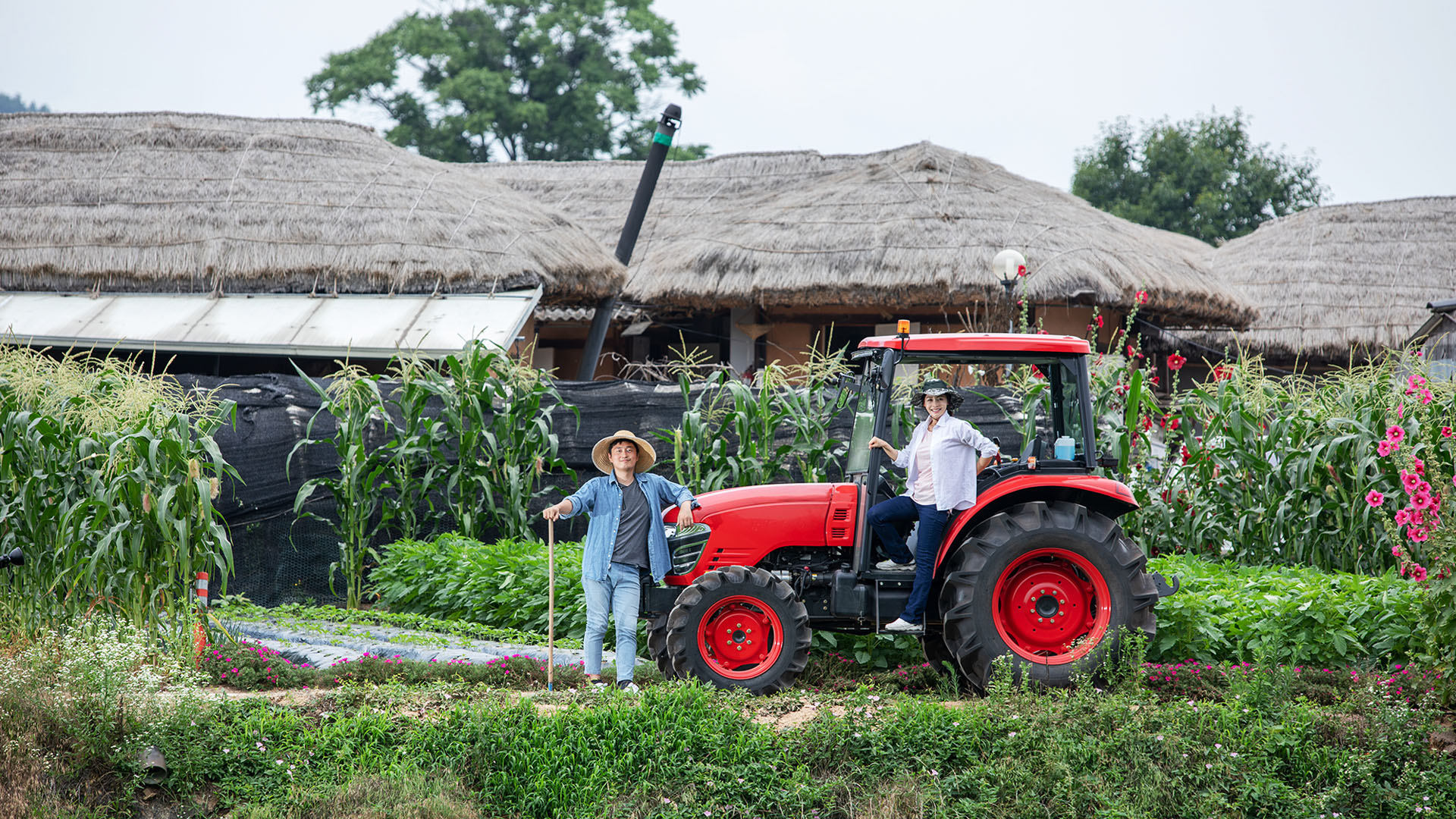
Cultivate with technology
From urban vertical farms to sprawling smart farms, ICT-enabled tools and smart farming practices have literally transformed the agricultural landscape. Recent technology has made it possible for everyone, from rooftop farmers to multinational food corporations, to be more efficient in their production. TYM is also developing self-driving tractors and other ICT-enabled machinery as an important piece of sustainability in the future of agriculture.
Technology has brought forth innovative ways to farm with more speed, power, and precision. What’s more, it can also mitigate the agriculture industry’s environmental impact and the growing shortage of land, water, and other natural resources required for cultivation. To that end, some companies use aquaponics to control the growing environment and maximize their output while others create soil additives that help plants grow with less water. Smart farming takes many forms, but it’s an increasingly important solution for sustainable agriculture.
Staff your business with new talent
Farm labor worldwide is dwindling due to an aging population in some regions, and a declining interest in agricultural careers in others. In some countries, restrictive immigration policies have exacerbated the chronic labor shortage in an industry that has relied heavily on migrant labor. To foster an interest in farming, some organizations are dedicated to training young people, kickstarting their careers with apprenticeships. Other government agencies and organizations employ underrepresented people in the farming industry. Whether it’s cultivating an interest in agriculture at a young age, or giving people an opportunity to discover a passion for growing food, organizations that take the initiative to broaden their talent pool address labor shortages at the grassroots level.
Address a bigger issue
Food loss and waste is a great contributor to the climate change crisis with its significant greenhouse gas (GHG) footprint. So much food is lost as it travels across the supply chain, many say that the world doesn't necessarily need to produce more food to feed its population—it just needs to waste less in the process. Upcycled food is a buzzword that’s gaining momentum these days, but “upcycled” simply refers to using ingredients that otherwise would not have gone to human consumption. Not only is upcycling an innovative solution to a growing waste problem, it has a positive impact on the environment. To offset some of the "ugly" produce that goes to waste, some businesses have teamed up with a growers to help them offload surplus or imperfect produce into weekly subscription boxes delivered fresh to customers. This isn’t specific to misshapen carrots; it could be an opportunity to make sure that surplus crops from a fruitful harvest or watermelons that don’t meet a quality Brix rating can still make their way onto a plate rather than a landfill.
Do the same thing differently
An innovative idea doesn’t necessarily have to be groundbreaking, just like upcycled food is simply a modern take on the ancient tradition of using every part of the crop or animal. Take for example, the traditional market. While a farmer’s market has been around for ages, only recently, driven in part by COVID-19, have some businesses decided to bring it online. An online farmer’s market isn’t a novelty by nature, but it’s a new way to connect local farmers and vendors with more customers, and for people to order fresh, farm-grown foods without leaving the comforts or safety of their home. In that way, you don’t need to reinvent the wheel to be innovative; you just need to adapt it to the current road condition.
Diversify a pre-existing farm business
Have an underutilized field, building, or other resources at your disposal? With a little creativity and market research, you may be able to make more of what you’ve already got. Farms that successfully diversify are often able to put their existing assets to use to create an additional business model with a lower initial investment. For example, flower farming is a versatile business that’s seeing a boom in the age of social media. Flower farms are a destination for tourists and influencers looking for the perfect backdrop. Flower farmers can supply florists and connect with event planners for decorations. And if you don’t manage to sell all your flowers in bloom, you can dry and press them to sell to hobbyists. From hospitality to retail, farm diversification can generate additional income for a pre-existing farming business.
Seek support for emerging farmers and ideas
Lastly, whether you have a genius idea or you’re about to start your foray into farming, there are ample resources and support to help you reach your goals. To help empower young farmers to take their farms to the next level, many agricultural machinery companies like TYM offer grants and donations for young farmers. Several regional governments around the world offer incentives to people who choose to take up farming or relocate to farming communities. With additional private and public assistance to bolster their ideas, entrepreneurs can take the leap to explore innovative ways to change the landscape of the farming and agriculture industry.
—
Please note that businesses linked in this article are not endorsements but just a few examples illustrate the many innovative agri-businesses in Korea and beyond.